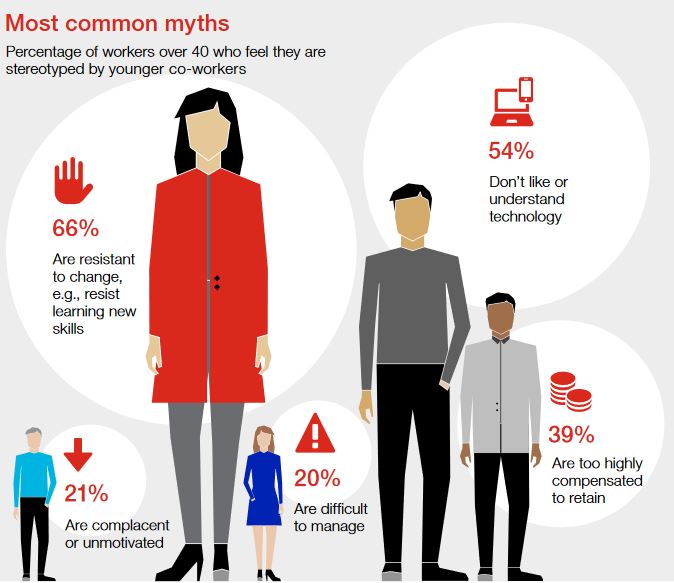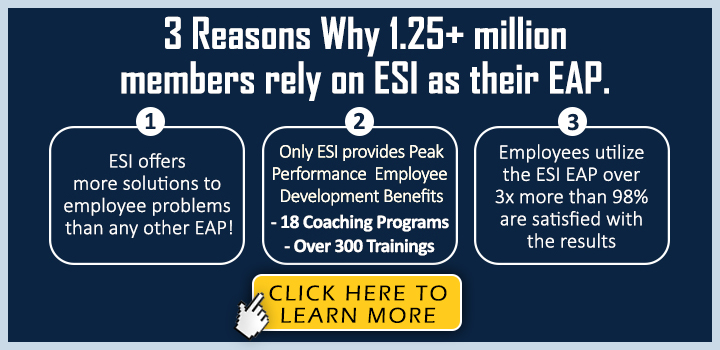An important report from Hiscox sheds light on the nature and scope of age discrimination in the workplace and how ageism is impacting the workforce.
A little more than a year ago, we marked the 50th anniversary of the Age Discrimination in Employment Act (the ADEA). At the time, EEOC issued a report which noted that with workplace demographics, we can expect a heightened risk of lawsuits in the coming years. Witness the IBM-related age discrimination case that is being played out in Texas, with more expected to follow. See the Pro Publica / Mother Jones reporting Inside IBM’s Purge of Thousands of Workers Who Have One Thing in Common, which alleges that over the past five years, IBM has terminated more than 20,000 workers over the age of 40, which amounted to around 60% of the job losses at IBM. Of this charge, IBM says: “IBM makes its employment decisions based on skills, not age. In fact, since 2010 there is no difference in the age of our U.S. workforce, but the skills profile has changed dramatically. That is why we have been and will continue investing heavily in employee skills and retraining — to make all of us successful in this new era of technology.” We will watch how the Texas case plays out.
Regardless of this case, age discrimination is a serious workplace issue. In addition to the potential for costly lawsuits, discrimination of any variety is simply toxic in the workplace, eroding morale, a respectful environment and the concept of fairness. In the report above, an EEOC spokesperson notes that. “Age discrimination is an open secret like sexual harassment was until recently.”
A recent report by sheds further light on the nature and scope of age discrimination in the workplace:2019 Hiscox Ageism in the Workplace Study. The report opens with this fact: By 2024, workers age 55 and older will represent 25% of the nation’s workforce, with the fastest annual growth rates among those aged 65-and-older.
The study surveyed 400 US workers aged 40 and over. Among the findings:
- 44% said they or someone they knew had experienced age discrimination in the workplace
- 21% or 1 in 5 said that they themselves had been discriminated against
- 35% said they feel their age has prevented them from getting a job since they turned 40
- 26% feel there is some risk they could lose their current job due to their age
- 37% of co-workers said they witnessed age discrimination, but more than half did not report it
- Only 40% of respondents who experienced age discrimination filed a charge or complaint
- 62% of respondents did not receive any form of age discrimination training in the previous 12 months.
The report also discusses many of the common myths and stereotypes about aging workers. This echoes the EEOC report, which noted that “Unfounded assumptions about age and ability continue to drive age discrimination in the workplace.” We’ve excerpted and posted the Hiscox graphic illustrating the most common myths.

Source: 2019 Hiscox Ageism in the Workplace Study™
It’s important to remember that age discrimination is not simply a hiring matter, once and done. Like any other form of discrimination, it can come to bear in any aspect of employment, including hiring, firing, pay, job assignments, promotions, layoffs, training, benefits and any other term or condition of employment.
The report closes with a three-part remedy:
- Prevention – through workforce training supported by a culture of inclusion that comes from the top, and zero-tolerance approach to violations of written policies
- Detection – being watchful for problem indicators and conducting periodic anonymous surveys.
- Mitigation – quick response to and investigation of any claims.
Among other suggestions for risk management, Hiscox suggests Employment Practices Liability Insurance.
Jon Hyman is an employment law attorney that we turn to frequently in compliance matters. He also talks about the Hiscox study in his Ohio Employer Law Blog. He closes with a summary of recommendations from the EEOC, which we reprint here:
1. Leadership needs to create and foster a workplace culture that is committed to a multi-generational workplace where all workers can grow and thrive, which extols ability and reject discriminatory stereotypes and words.
2. Employers and employees must recognize and reject stereotypes, assumptions, and remarks about age and older workers, and treat them no differently than stereotypes, assumptions, and remarks about sex, race, disability, national origin, religion, or other protected classes.
3. Companies should work to increase the age diversity of the workforce by hiring, retaining, and engaging employees of all generations,
4. Businesses should implement recruitment and hiring strategies that avoid age bias by seeking workers of all ages and not limiting qualifications based on age or years of experience. These strategies should include training recruiters and interviewers to avoid ageist assumptions and common perceptions about older workers, assessing interviewing strategies to avoid age bias, and having an age-diverse interview panel for prospective employees.
5. Employers should develop retention strategies to keep older workers. I’ve written about this point before, which you’ll find here.
Related from our archives:
EEOC: 50+ years after Age Discrimination in Employment Act, problems persist


